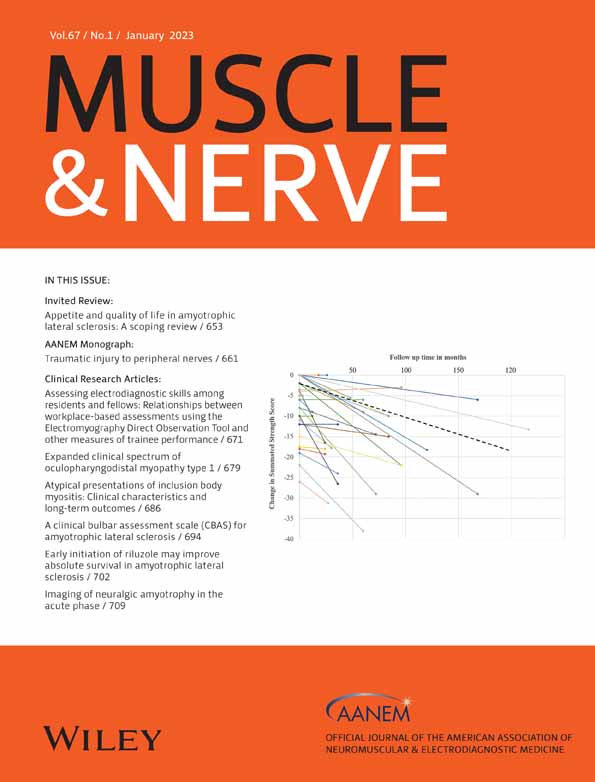Risk assessment of dorsal scapular nerve injury in the medial scapular area associated with upper extremity position: An ultrasonographic study
Funding information: National Research Foundation of Korea, Grant/Award Number: NRF-2020R1A2C1009024
Abstract
Introduction/Aims
Injuries to the dorsal scapular nerve (DSN) in the interscapular region are relatively uncommon. Physicians may therefore underestimate the risk of damage to the DSN during procedures. The aim of this study was to identify the topographic position of the DSN in the interscapular region and to identify injection positions for the upper extremities that minimize the risk of damage to the DSN during procedures.
Methods
The positional relationships between the DSN and scapula were quantified by ultrasonography in 46 healthy volunteers. The distances between the medial scapular line and DSN and the DSN depths from the surface in Zones 1 (the superior angle), 2 (the scapular spine), and 3 (between the scapular spine and inferior angle) were measured in the anatomical and contralateral shoulder touch positions (positions 1 and 2, respectively).
Results
The DSN was located further away from the medial border of the scapula and closer to the skin in position 2 than in position 1. The horizontal distance of the DSN in Zone 2 differed significantly between the two positions (0.85 ± 0.38 vs 1.23 ± 0.38, P < .001). The results suggest a safe area as just medial to the medial scapular border in Zone 2 in position 2. The safety margin should be considered at least 1.5 cm medial to the medial border of the scapula in Zone 3 in position 1.
Discussion
Performing invasive procedures in the interscapular region, appropriate individualized positioning may reduce the risk of DSN injury.
CONFLICT OF INTEREST
None of the authors have any conflicts of interest to disclose.
Open Research
DATA AVAILABILITY STATEMENT
The data that support the findings of this study are available on request from the corresponding author. The data are not publicly available due to privacy or ethical restrictions.




